
Bible, History, Archaeology
Bible,
History,
Archaeology
The oldest inscription
engraved from Jerusalem
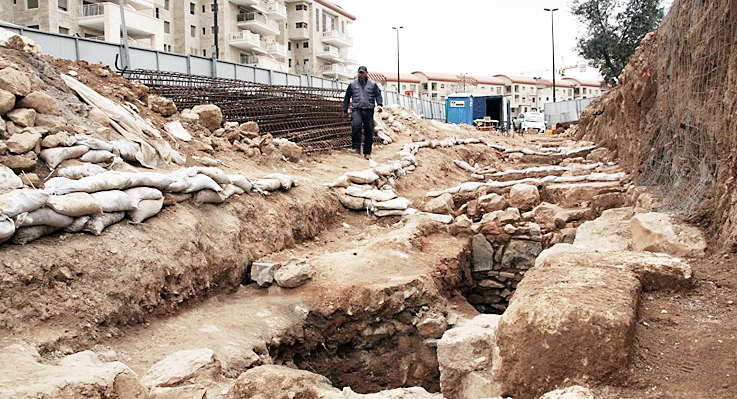
Image opposite: site of the archaeological dig where the column drum with its inscription was unearthed. Yoli Shwartz / IAA.
The discovery
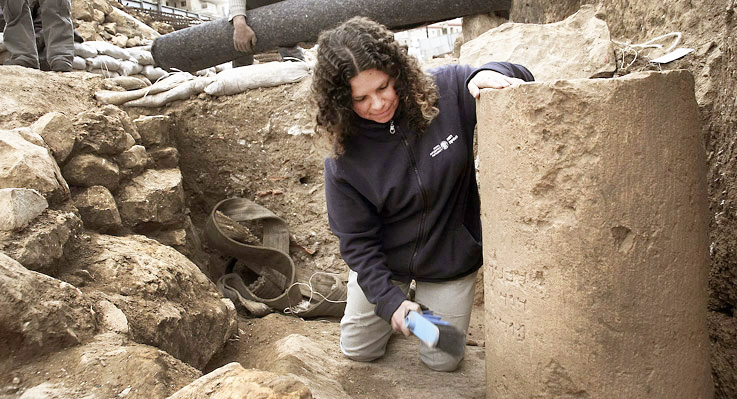
Image opposite: Danit Levy, head of excavations for the Israel Antiquities Authority, examines the inscription engraved on the drum of the stone column © Yoli Shwartz / IAA.
Researchers believe that this column was re-used from an earlier building, probably dating from the reign of Herod the Great (37 to 4 BC).
Registration
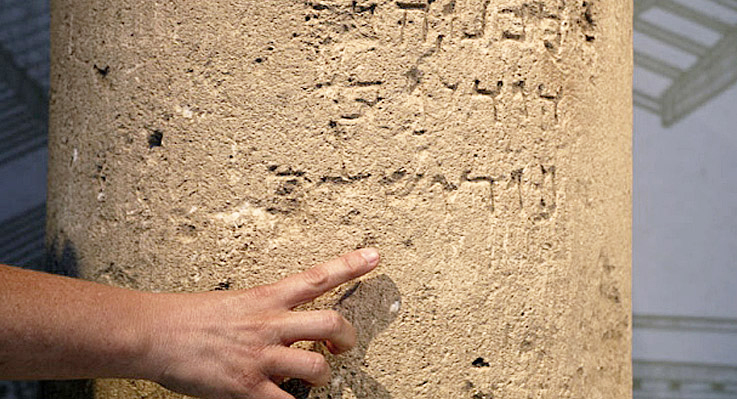
Image opposite: Danit Levy, head of excavations for the Israel Antiquities Authority, shows the detail of the inscription engraved on the stone column © Yoli Shwartz / IAA.
The spelling of the name «Jerusalem» generally appears in an abbreviated version. Thus, on ancient inscriptions, Jerusalem is spelled «Yerushalem» or «Shalem», rather than «Yerushalayim» as it is mentioned on the monument and today in Hebrew.
Yuval Baruch, archaeologist at the IAA, and Ronny Reich, professor of archaeology at the University of Haifa, declare «This unusual spelling is known to us in another example, on coins dated to the First Jewish Revolt against the Romans, from 66 to 70 A.D.».
The spelling difference concerns the presence of a yod (usually transcribed Y) between the L and the M. In transcription : YRWŠLM and YRWŠLYM
In the Bible, the word «Jerusalem» appears 660 times, but there are only five instances that spell out the full name «Yerushalayim». These five occurrences are mentioned in Jeremiah 26:18, Esther 2:6, 2 Chronicles 25:1, 2 Chronicles 32:9 and 2 Chronicles 25:1.
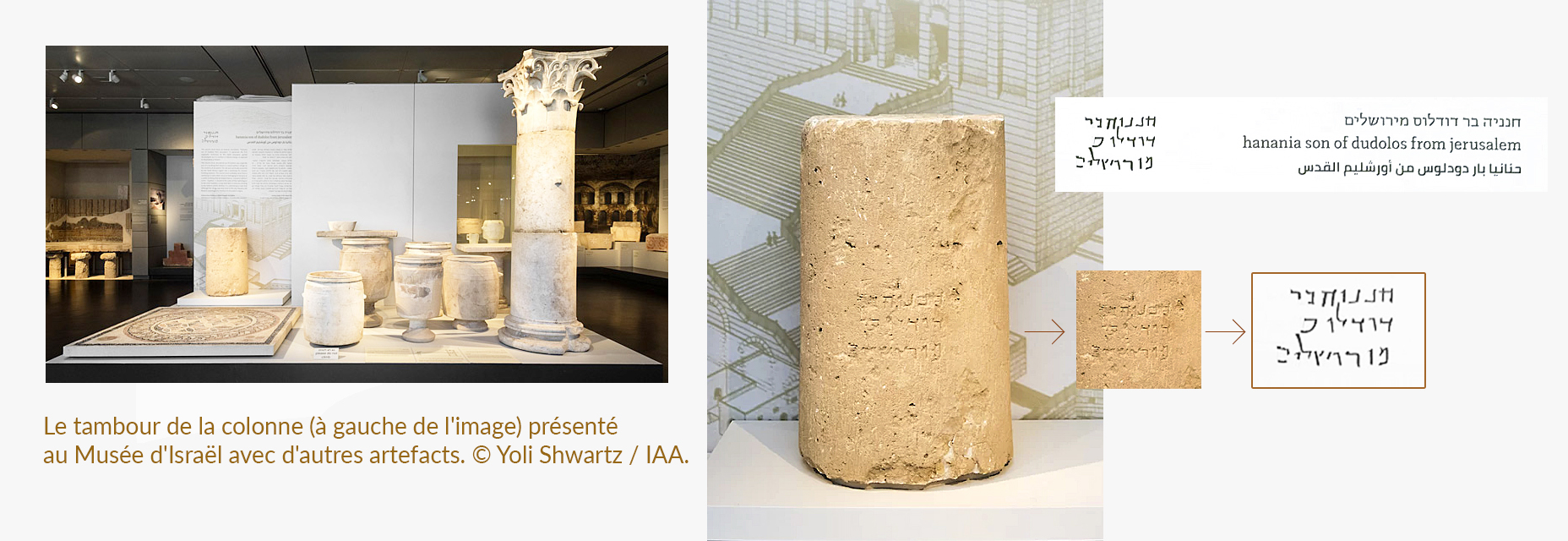
 The identity of the two people
The identity of the two people
This new inscription refers to two people - Hananiah and Dodalos - whose exact identities are unknown today. Dudy Mevorach, Chief Curator of the Department of Archaeology at the Israel Museum, believes that Hananiah must have been a ceramic craftsman who chose the «assumed name» of «son of Dodalos» in reference to the sculptor and architect Dodalos (Daedalus), an emblematic figure in Greek mythology. Dodalos, an Athenian sculptor, blacksmith and architect of exceptional talent, was a descendant of the royal family of Erichthonios. He was praised by many Latin and Greek authors for his aesthetic genius and technical ingenuity.
Image opposite: Bronze statuette of Dedalos (Daedalus), 3rd century BC, Plaos, Republic of Macedonia. Petre Stojkowski.
A potters« paradise
According to the archaeologists, the site where they discovered the inscription appears to have been a pottery district. The area contains artifacts spanning a period of over 300 years, from the Hasmonean period (140 to 116 BC) to the end of the Roman era.
«This is the largest ancient pottery production site in the Jerusalem area,» said Danit Levy, in charge of the excavations.
The site includes kilns, clay preparation basins, plaster cisterns, ritual baths and workspaces for drying and storing ceramic products. Archaeologists have discovered that during Herod's reign, potters concentrated on creating firing vessels.
It seems that the potters were successful in their trade, as archaeologists have found evidence of a small village nearby, whose economy probably depended on pottery production. The pots were sold in bulk to people living in and around Jerusalem, particularly at the city gates for visiting pilgrims.
After the fall of Jerusalem in 70, the potter's workshop seems to have resumed its activity, albeit on a smaller scale. This came to an end in the early 2nd century CE, when the 10th Roman legion Fretensis took control of the area and set up its own workshop, enabling them to manufacture bricks, crockery, kitchen utensils and storage containers.
The stone column and kilns from the potters' workshop will be on display at the Israel Museum in Jerusalem, as part of a new exhibition featuring artifacts from the capital.
Two further finds join the inscription on display at the Israel Museum: a Greek mosaic inscription from the 6th century CE, displayed near the Damascus Gate; and a coffin lid from the 1st century CE with a Hebrew inscription reading «the son of the high priest».

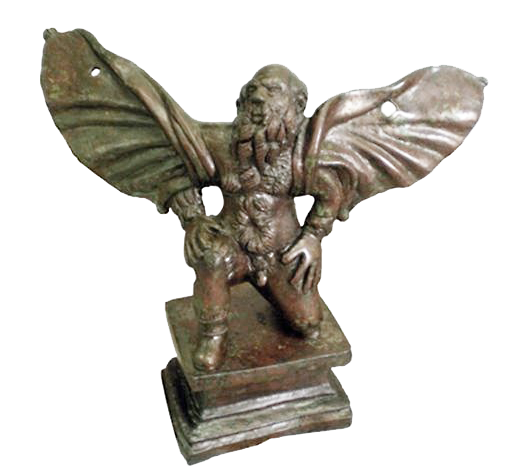 The identity of the two people
The identity of the two people